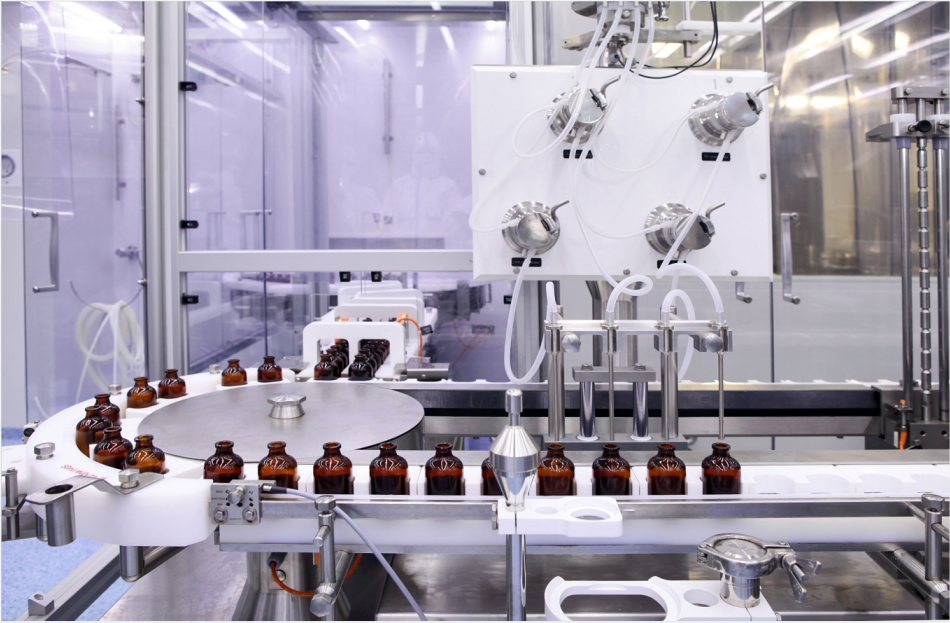Biopharmaceutical impurities can be divided into two categories: extraneous contaminants and product-related impurities. Extraneous contaminants include microbial contamination, pyrogens, cellular components, components in culture media, substances from various steps in the production process, and substances from purification steps, etc. Various impurities and quantities will affect the safety of the final drug, and the identification, quantification, qualitative and control and removal of impurities are very important in the development process. Common biopharmaceutical impurities include: Protein A, G and L residues; double-stranded RNA (dsRNA) residues; host DNA residues; BSA residues; CHO host protein (HCP) residues.
Figure1. The Production of biological products.
Protein A, G and L residues
Affinity chromatography for Protein A, G and L is a common method for purifying therapeutic antibodies. They can separate the proteins on the surface of engineered bacteria very well. However, they will shed to a certain extent during repeated use, and the remaining Protein A, G, and L in the product will cause adverse immune responses. The complex of it and antibody can activate the immune response of Fc-carrying leukocytes and complement system in vivo, resulting in oxidation and allergic reactions. Therefore, it is necessary to detect whether Protein A, G and L remain in the product during the production process. Among them, the commonly used method is ELISA detection.
dsRNA Residue
In the process of preparing mRNA vaccines based on enzyme reactions, abnormal in vitro transcription reactions (IVT) may also introduce dsRNA contaminants. Detection and removal of dsRNA contamination generated in in vitro reactions is more important for RNA vaccine production than viral-derived dsRNA. IVT mRNA mixed with dsRNA contamination will cause a strong type I interferon-mediated antiviral response, upregulate the expression of key enzymes such as PKR and OAS, resulting in the inhibition of cellular translation and the degradation of intracellular mRNA and ribosomal RNA. Correspondingly, the introduction of an FPLC purification process that can efficiently remove dsRNA contamination can increase IVT mRNA-mediated protein expression by 1000-fold in primary human DC cells. Therefore, proper and efficient IVT mRNA purification during mRNA vaccine production is critical for maximizing production of DC antigenic proteins and avoiding unnecessary activation of autoimmune responses.
Host Cell DNA Residue
Recombinant protein drugs, antibody drugs, vaccines and other products in biological products are expressed and produced by continuously passaged animal cell lines. Although they have undergone strict purification processes, there may still be residual host cell DNA in the products. The risks associated with host cell residual DNA in viral vaccines are mainly infectivity and carcinogenicity, if retroviral proviruses are present, their genes integrated into the recipient genome may cause infection; if there are viruses or oncogenes in the passaged cell matrix, may have the potential risk of causing tumors. Therefore, it is very important to establish a suitable detection method for residual DNA in host cells to monitor the safety and quality controllability of biological products.
BSA Residue
The production of biologics often requires cell culture, and bovine serum albumin (BSA) is used as a nutrient in cell and microbial culture. A large amount of bovine serum albumin has removed most of the BSA through steps such as washing and purification during the production process, but trace amounts of BSA still exist in the finished biological preparations. As a foreign protein, BSA may cause severe allergic reactions after entering the human body and affect the safety of biological products. Therefore, strictly controlling the content of BSA in products is one of the key tasks in the production of biological products. In addition to vaccines, biological agents such as cell therapy, stem cells, and tissue engineering products will also be tested for BSA residues to ensure the safety of related biological products.
CHO Host Cell Protein (HCP) Residue
Host cell proteins (HCPs) are process-related impurities expressed by host cells used to produce biopharmaceutical proteins. During purification, most of the HCPs are removed (>99%), but residual HCP amounts remain in distributed products such as monoclonal antibodies (mAbs), antibody-drug conjugates (ADCs), therapeutic proteins, vaccines, and other protein-based biopharmaceuticals. National regulatory mandates such as FDA require that biopharmaceuticals must be analyzed and purified to reduce the host cell protein HCP to acceptable levels.

